The phrase “Concorde Moment” is reserved for the handful of times one of humankind’s creations is discontinued and entire industries take a leap of regression as a result. It’s been nearly 22 years since the supersonic airliner took to the skies for the last time, and the world of aviation has never been the same since. Less than two years after that final flight, another Concorde Moment happened: The last Chevrolet Astro and GMC Safari rolled off the production line in Baltimore.
Flash back to 1985, and the Chevrolet Astro and GMC Safari offered glimpses of the future. Flush glass made an appearance on the Astro before making its way to the GMT400 pickup trucks, as did an aero-look front end with an air dam, and hidden drip rails. It all added up to a van that looked more futuristic than a Plymouth Voyager, even if underneath, it wasn’t exactly revolutionary.
Contrary to popular myth, the Astro is not body-on-frame. Like an old Camaro, it uses a massive K-member to mount the engine and transmission in the vehicle. The front suspension used upper control arms straight out of the B-body full-size sedans and wagons, but the powertrain selection and live rear axle with leaf springs was very S-10-ish, even if the leaf springs here were composite. The result was a rather literal interpretation of shrinking a full-size van down a bit, and like many GM products of the Smith era, there were some stumbling blocks.

For one, the Astro and Safari debuted as standard with a 92-horsepower 2.5-liter Iron Duke four-cylinder engine. Fine in a Fiero, but not enough grunt to pull the skin off a rice pudding in something like this, even when paired with a four- or five-speed manual transmission. Mercifully, the other available engine was Chevrolet’s 4.3-liter pushrod V6 from the full-size sedans, and with 145 horsepower and 225 lb.-ft. of torque, this was a far better match for the application.

When it came to use as a passenger van, the Astro and Safari were originally outclassed by the Chrysler minivan. Sure, the GM van had amazing space, but its traditional cab-forward packaging with an engine doghouse meant that the footwells were incredibly cramped compared to the Chrysler’s, and a height some 9.3 inches taller than the Chrysler hindered garage clearance. Still, thanks in part to the powerful available V6 and options like a comprehensive overhead console, swing-out rear door glass, and dual air conditioning, the Astro and Safari sold well enough to families. However, it sold even better to companies.

The same sort of traits that made the Astro and Safari suboptimal for family transport made it brilliant for commercial use. Its truckish nature meant it was often durable, its maximum rated towing capacity of 6,000 pounds when properly equipped blew the Chrysler minivans out of the water, its upright design and 1,700-pound payload capacity was great for hauling boxes and being a service vehicle, and seating for two, four, seven, or eight added huge flexibility depending on what you wanted to do with it. Plus, being much smaller than a big van, it was more economical to run than a G-series full-sizer.
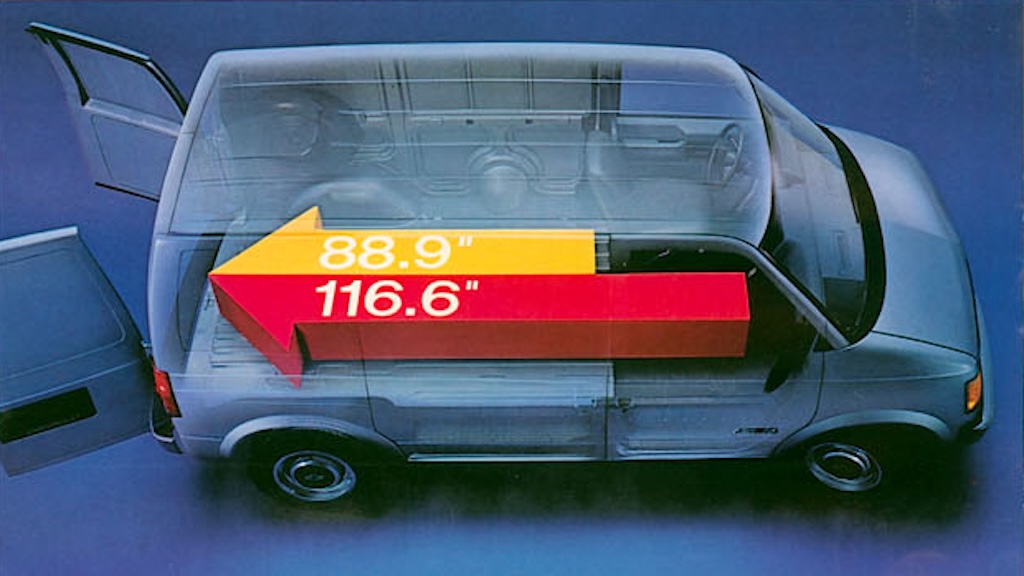
As a result, the Astro and Safari started appearing everywhere, in all sorts of roles. You were just as likely to see one in the school pick-up line as you would if you called a plumber to your house, and it became a defining commercial vehicle for America. Smaller and more refined than a full-size van, but still capable.

Over the years, updates rolled in. The four-cylinder engine was eventually discontinued, full-time all-wheel-drive, upper control arms from the half-ton trucks, and an available extended body style joined the party for 1990, and 1992 saw the greatest rear door arrangement of any minivan, Dutch doors. In this configuration, the rear window flipped up and two half-doors swung out to the sides, reducing swing space over a liftgate and improving rearward visibility over two traditional hinged rear doors. Perfect for the conversion van rush of the ’90s, which saw Astro and Safari vans gain sleeping quarters, high roofs, televisions, and all manner of road trip creature comforts.
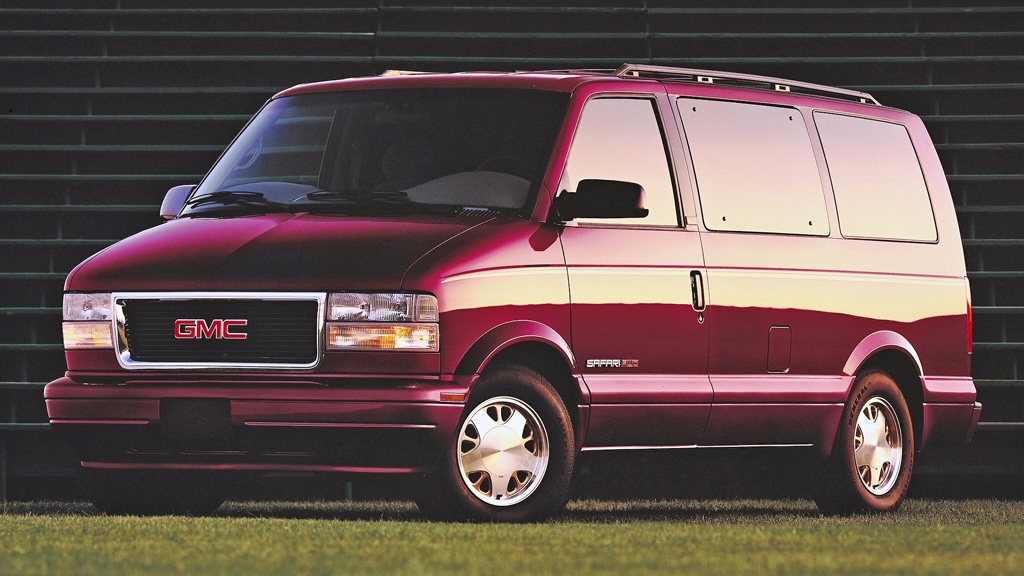
By 1995, these unusual mid-size vans were a decade old, but rather than admitting that the transverse front-wheel-drive layout that just about every other manufacturer adopted was superior, GM kept the Astro and Safari going alongside its front-wheel-drive minivans, doubling down on the inbetweeners. Not only were the vans restyled to mimic the Express full-size van, but the short-length bodystyle was dropped, equipment levels were beefed up, noise levels were tamped down, and the 4.3-liter V6 gained sequential fuel injection. While 190 horsepower was nothing to sneeze at, 250 lb.-ft. of torque at 2,800 RPM made for serious pulling power, and even though revised tow ratings had dropped to 5,500 pounds, that’s still plenty.
However, the Chevrolet Astro and GMC Safari had another problem by the mid-’90s, and that was a matter of safety. While it did okay in NHTSA frontal crash testing, the structural age of a mid-’80s vehicle really reared its head by the end of the grunge era. When the IIHS sent one of these vans into a deformable offset barrier at 40 MPH, the results weren’t pretty. Not great for families looking for a safe way to transport their children, but it didn’t do much to hamper the commercial appeal of these vans.

By 2002, the Astro and Safari were both ancient and some of the least crashworthy new vehicles on American roads. Production was initially slated to wind down in 2003, but incredibly, the midsize vans were still making GM money and selling tens of thousands of units, mostly to contractors and other fleet customers who wanted a little bit more than a minivan, so the General re-charted its course, this time to the end of the 2005 model year. As Automotive News reported:
GM has told workers of the decision. It had said earlier that there were no plans for the plant after the 2003 model year, spokesman Pat Morrissey said.
In part because of strong fleet sales, the rear-wheel-drive minivans remain profitable, Morrissey said.
When the Chevrolet Astro and GMC Safari finally left the new vehicle market, something interesting happened to these 20-year-old, ancient, unrefined vans. People who used them for work held onto them forever. It’s been two decades and yet you still occasionally see these vans were last made, but because they’re simple, tough, and relatively spacious yet relatively compact, nothing launched since has been able to touch it. The closest modern equivalent is the Mercedes-Benz Metris, and you can’t truly beat the brakes off of one of those without expecting at least some sort of repair bill.
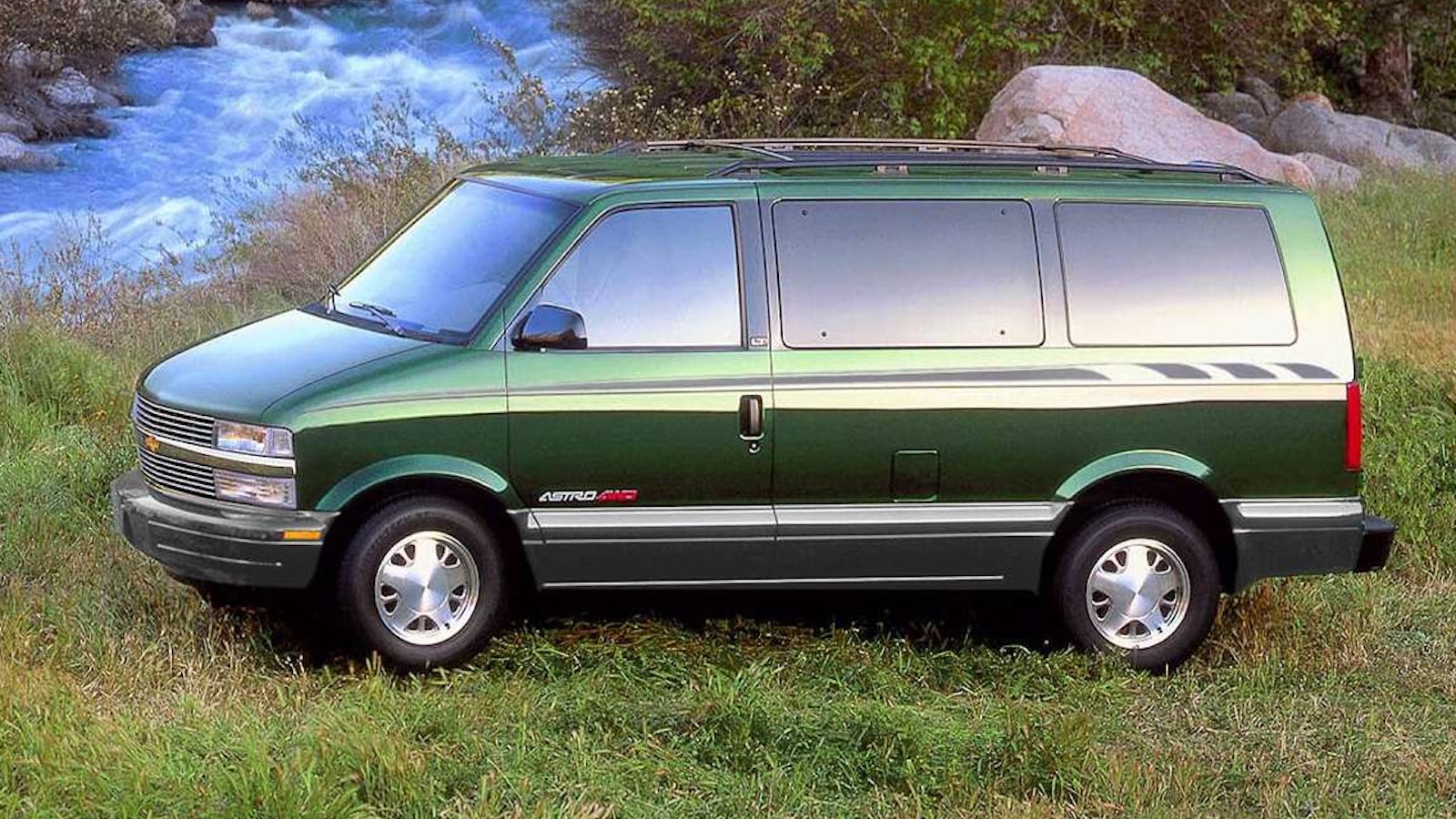
Plus, the all-wheel-drive Astros and Safaris have found a huge following among Van Lifers, because where else are you getting an all-wheel-drive van with a live rear axle and a 111-inch wheelbase that can help get you to the trailhead? It’s basically this or importing a Mitsubishi Delica, and good luck getting every part you need for a Delica from Autozone.
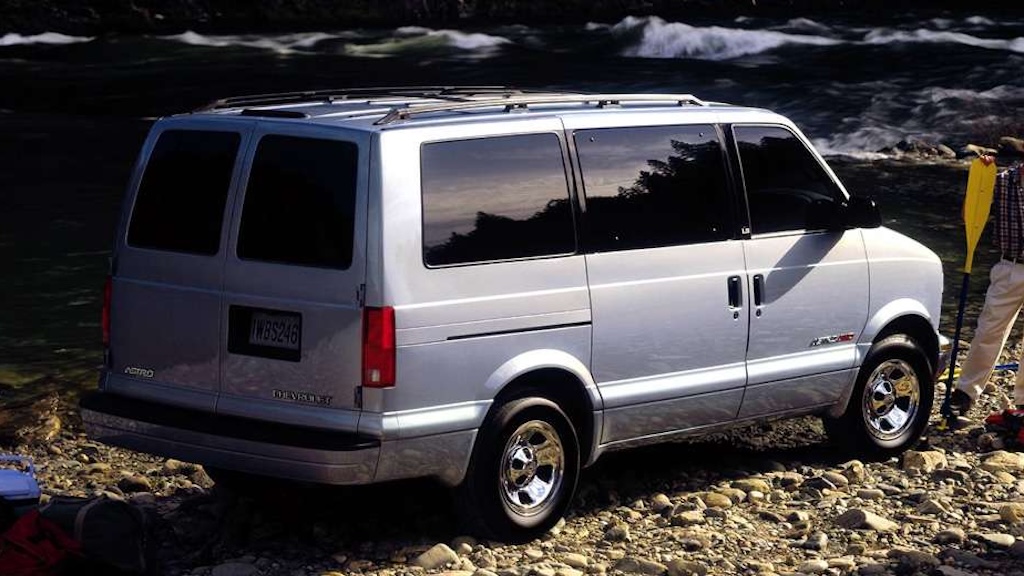
The Chevrolet Astro and GMC Safari failed at beating the Chrysler minivans, but they absolutely succeeded at giving hard-workers and adventurers a cheap, tough, Goldilocks-sized van that got the job done. Keep the transmission fluid cool, keep up on regular maintenance, and the later ones should last essentially forever. If GM made a modern equivalent, would it sell? Maybe. There really hasn’t been a true modern equivalent, and with regular consumers having surfed the SUV wave of the ’90s into the crossover-mania of today, the heart of the original Astro market is exactly where a new one could work. However, the age of automotive simplicity is over, and simplicity is what helped the Astro and Safari become enduring machines. Either way, GM ended up creating just about the perfect van for America here, which explains why people still keep them around today.
Top graphic image: Chevrolet
Support our mission of championing car culture by becoming an Official Autopian Member.






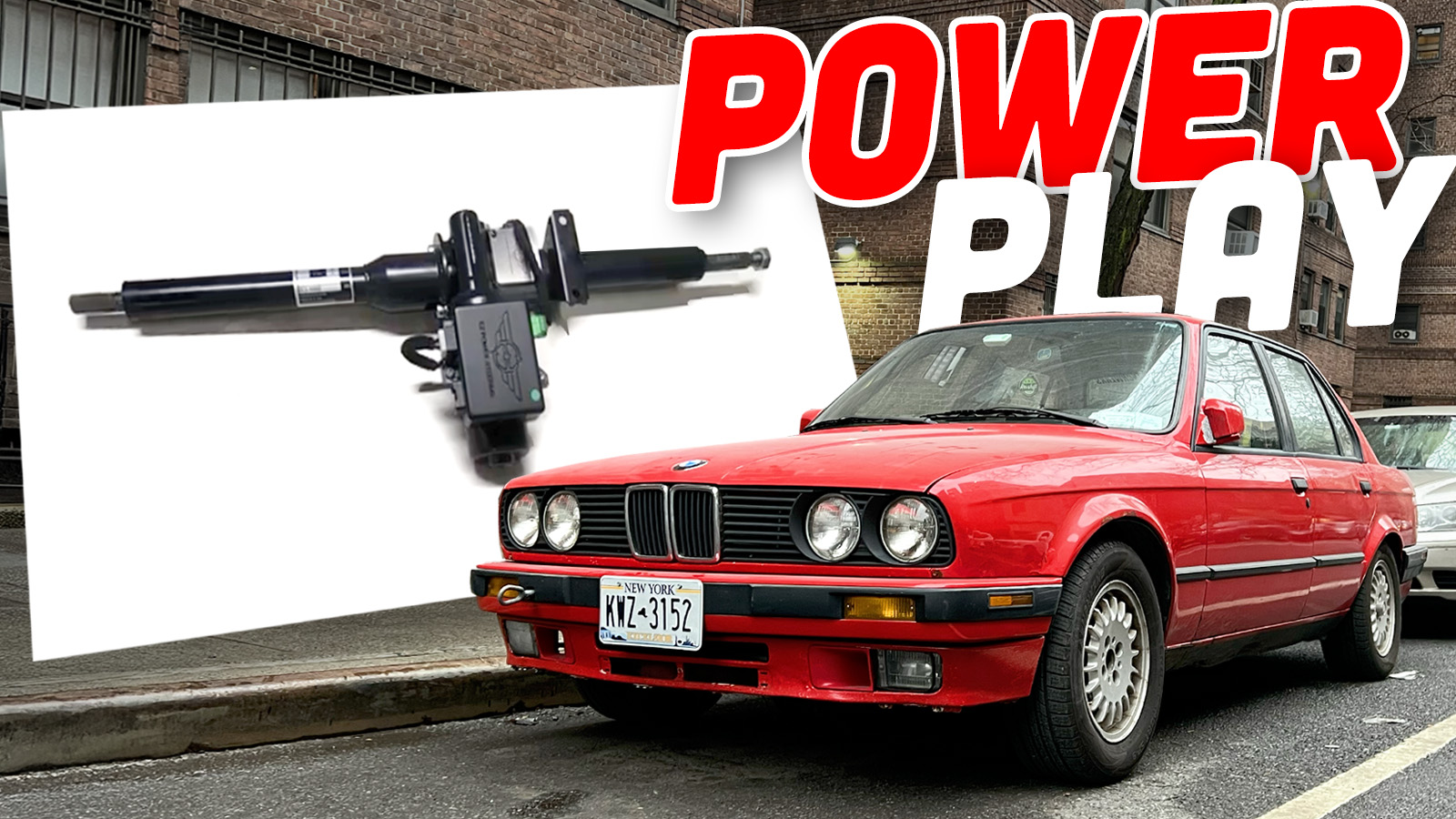

A close friend is a cabinetmaker. He said ‘This article speaks to my soul’ 🙂
We had two of these when I was a kid (one with the perfect Dutch doors) and they just beat the pants off the Voyager.
Not only was AWD in a van a pretty rare thing back then, but the room and comfort for the passengers was top notch. (I can’t speak to driver comfort, but my 6′ 2″ dad never seemed to mind on long trips.) The benches on one of our vans had a fold-down center console, but also arm rests, head rests, and reclining back rests on the outer two seats. It was all the advantages of a captain’s chair, with a large, recessed flat area to put your McDonalds and the ability to carry 3 people per row in a pinch.
While the seats were heavy, I can say from experience that a 12 yo could remove them and drag them to the garage by himself.
Take out the seats, lay down some plastic, and you could haul a dozen sheep to the auction (or two very angry pigs in a crate).
Take out the back seat and you could haul 4 Scouts and half the Troop’s gear (taking full advantage of that tall, square cargo area) from Pittsburgh to Yellowstone.
I still don’t understand why no automakers can seem to identify the huge hole in the market for simplicity. The huge excitement around Slate would seem to be an indication of something…
The VW id.buzz could have been the start of an American van revival. Hopefully the movement starts again, because nothing really beats a good van, and some more options would be great.
Side note, has the Cadilac ELR been featured on GM hit or miss? That vehicle and the euro Buicks (the Cascadia and the TourX) from around the same time show just how recent GM was doing weird stuff. Also, anyone remember that last generation of the Regal GS circa 2018? It was a silent farewell to the V6 sedan in the US. Anyone know if they were any good?
Also, the Regal Tourx. That had AWD too?
Maybe the Autopian should write about it too.
You might say the Astro concept is dead, and that might be true in America, but an underrated thing people forget is that the Astro/Safari (specifically conversion van variants) was basically the most popular grey import in Japan for more than a decade, barring a couple German luxury cars. Tuners took note of this, decking out Nissan Caravans and Toyota Hiaces with TVs, nice wheels, and fancy seats, and soon the manufacturers decided to make their own luxury large passenger vans, bringing about the Elgrand from Nissan and the Granvia (soon to be the Alphard and the Vellfire) from Toyota. South Korea also had a similar trend although despite the popularity of American luxury cars in the 80s and 90s, I don’t know if Astros were popular.
Ultimately, if you go basically any East/Southeast Asian country, you will see the DNA of the Astro conversion van all over the place. Celebrities, politicians, rich families, gangsters, they all want a big square comfy van, and the Astro is a big reason for it.
These things moved me to and from college, into my first apartment after college. Soldiered thru one of the worst UP of Michigan snowstorms in decades with its awd system. I recall you could get 18-19 on some of the later ones if you kept it slower (right at 65 or 70) on the highway.
Yeah they drove kinda like crap, not too refined and of course sketchy crash results. But that said, just big enough and did the job well. I still see them running around, my sprinkler contractor has one. It’s a 2004 awd safari and it’s looking very worn, marks its territory on my drive every time it parks with engine oil leaking, but still runs and gets him around. His words were “it’s rusty and dusty, but trusty”…
Ok so let’s talk about what GM platform this could come back on? How about a canyon/Colorado chassis but cab forward? Probably bit longer nose needed with new crash standards. Maybe 2.7 turbo 4? Get weird with a baby Duramax straight 3.0L 6? Tho that would be a long engine, so doghouse would be really long… Or perhaps a hybrid arrangement? Keep it simple, sure the modern tech, some basic ADAS, etc but not a screenfest, connected this and that luxo optioned 80k deal. Comfortable but simple and durable interior, perhaps an overlanding ish or kinda medium duty off roader option, like a Z71 package? How about some random weirdness like the Honda element, seats fold flat or to side, tent option for out back, hybrid power station, perhaps rubber floor option, fold down ramp in the back to allow stuff to be rolled in for contractors. The Bishop can maybe sketch one up us?
How did you not get a single picture of the sweet two-tones they offered? My parents bought a white-over-blue 1986 that they bequeathed to me when I went off to college in 1999. Between them and me, we got 225k out of it, and the issue that finally proved not worthy of fixing was a rear diff issue.
Also, how can you not mention how 1980s GM they were?
Shortly before I inherited it, the dashboard backlight burned out. It was something like a $0.75 light bulb, but to replace it, they’d have to take the whole dash apart. We ended up with a flashlight instead.
Also, after I inherited it, I had to put a new stereo in it. Immediately. I got a new head unit and a CD changer… but there was no practical way to switch the front speakers because GM installed them at the very front of the dash… before the windshield. There was no physical clearance to remove the speakers with the windshield in place.
Hmph. Fast forward 6 years, and they would be building my 2005 TrailBlazer, which, per the service manual, required disassembly of the entire front fascia of the car to replace the water pump. Why? Because you couldn’t remove the fan shroud by itself to get at the water pump, because the radiator fill neck blocked it from lifting out of the engine bay. So everything in front of it has to come out to get to it. I mean grille, headlight buckets, pretty much everything above the bumper in front of the serpentine belt. Almost the kind of job you would rather hire a body shop to do. A shop my family had used for generations for good repair work at a fair price quoted me $750. That’s how I found out how involved it was.
But thank God for YouTube, where I decided to take the identical advice of a half dozen different shade tree mechanics: I took a hacksaw and chopped a notch around the fill neck in the fan shroud, and threw the piece away. So if you ever have to change the water pump on your TrailBlazer, and you’re scratching your head wondering how to even get at it without the whole front of the truck coming apart, the first tool to get out is the saw or the death wheel. I saved my family over 500 bucks, minus an afternoon of sweat equity, a hacksaw blade, and the nastiest busted thumb I’d given myself in quite some time. Worth it.
Which motor? I never had that issue with the 4.2- the fan and shroud were a pain,but no more than any other car.
I’ve changed the water pump on my 2003 Envoy, and it wasn’t that involved. I read through the threads on Trailvoy.com and I think I had it done in less than 2 hours.
I guess the water pump in the N/A Explorer is just as bad. But it is inside the engine.
Heck yeah, was wondering when I’d see an Astro article on Autopian! I bought mine 99 AWD for $3500 in 2018 with only 100k miles, but the suspension was roached. I rebuilt the front end with all new parts, then did a 3″ lift all around and installed 29s. I just hit 152k tonight, and can confirm, it is truly an epic van! I started a youtube series on these vans with all the mods I’ve done; rain sensing roof fan, dc to dc charger with a super compact lithium setup, a completely stealth integrated Chinese Diesel Heater that’s kept me warm in single digit temps, a factory G80 locking diff in back, man, list goes on and on.
The one magic combination the Astro has that seemingly no other vehicle has, is the combination of towing ability, and a short wheelbase. I have a tight driveway and the shortness of the Astro is essential for turning boat trailers around at the top of my driveway. Any modern truck is basically a stretch limo by comparison!
However, it hasn’t been all rainbows and unicorns.
This has been the single most unreliable vehicle I’ve ever owned. Every 4-5k miles, the van would start to stumble, and eventually refuse to start, especially if it was damp/rainy out. And every time, the solution was the same, pull the console, pull the doghouse (which is super annoying if you have giant cushy conversion van seats like me), and then replace the cap/rotor on the distributor, which had corroded points inside.
I tried AC delco caps. I tried brass/marine caps. I tried high performance caps. No change. Eventually I replaced the entire distributor with a high quality billet version, after reading the distributor gear itself could be worn and thus slightly behind where the ECU thinks it is. No dice, still didn’t work.
The fix wound up being ridiculous; I noticed the corrosion on the contacts inside the dizzie were always off to the side of the pins, not pointed towards the center. This got me thinking, so I took an older distributor cap and dremeled a hole into the top of it, and then installed it and recorded what was happening inside the thing! My suspicions were confirmed; I was getting an obnoxiously long spark inside of it, so I then modified the distributor hold down bracket to allow me to rotate it to reduce the spark length, and it’s now been 12k miles without having to do the cap/rotor, which is a massive improvement!
The other downside is the engine sucks; people like to say it has the power of a 4 cylinder with the fuel economy of a V8; I get 13mpg. 13mpg city. 13mpg highway. It’s always 13mpg. Ironically, people who V8 swap these things usually wind up getting BETTER mpg due to the additional torque of the V8 keeping the TC locked up/in top gear. The V6 just lacks torque down low, so at highway speeds it tends to downshift whenever there is a headwind or a 1% grade.
Also… it sorta drives like garbage, lol.
Anyway, still love my van! The combo of short wheelbase + AWD + towing is really leaving nothing I could replace it with.
Every once in awhile, the big 3 get something right. Kind of like how a broken clock is still correct, twice a day.
One day during time trials at the local drag strip many years ago I was shocked by one of these. It was a normal family hauling Astro window van and it was running high 12 second quarters. I talked to the owner and he stated it was 350 swapped and it went together like the factory planned it and it was his wife’s daily kid hauler.
I think it was at that time the sleepiest sleeper I’d ever seen.
Imagine waiting at the school pickup line and your buddy’s mom comes up in her dorky minivan. And then she absolutely roasts the tires on her way out of the lot.
I know someone that did a 350 swap with a 5 speed Tremac transmission behind it. Not looked very stock and was quite good. They eventually had plans to hang a couple of turbos off of it.
Yeah I knew someone who swapped a 350 into one. Apparently not terribly difficult.
Would like to find a pop-top Astro/Safari Tiger GT, do an AWD conversion with a mild lift and mild A/T tires and do a neat little boondock/fire-road/bug-out vehicle.
During HS and College summers, i worked for a locksmith/alarm company that had these vans as their “fleet”. For commercial purposes they were incredible. Plenty of payload to haul inventory, and we had the interiors sorted out to include a small workbench inside (which made things like changing cylinder pins in Cleveland winters bearable). We had one set up specifically for the 2 guys who did alarm system installs, another “optimized” to move/deliver safes (by optimized I mean not full of crap or have the work bench, so there was more cargo area open for hauling large boxes made of steel), and 3 others that were “general purpose” for doing the day to day service calls for lockouts/rekeys/ knobset/deadbolt installs, etc
These were the first GM vehicles where I learned the old axiom “it will run like crap, but it will run like crap forever”. The 2 oldest vans in the fleet were north of 300k miles, and still chugging along. I’ll always have a soft spot in my heart for the Astro van
Why even write about this. We are a car site why do we want to read about a vehicle designed to perform in so many different ways and better than other vehicles? Forget Miata usually an appliance is the answer. After all what fan category vehicle out performs the appliance category?
You have completely lost me. Why write about a vehicle that fills a niche? What do you want Autopian to write about? I never want to buy an Astro, but I find the article very interesting.
That was a joke but my j,k,l,o,l, and s keys are worn out
You must be new here.
No, not new…but all they post is gibberish nonsense
I like the clean, modern, somewhat aerodynamic shape it had. It was also very compact and not oversized. I think it could easily fit in a garage.
I’ve always personally loved the shape and the compactness of the design. You know who hated it? Insurance companies. The Astro van didn’t do that well in some aspects of crash testing, and carried higher than average losses. It was reflected in the premium.
“Why Nothing Can Replace The Chevy Astro And GMC Safari”
I think the short wheelbase versions of the Ford Transit and Mercedes Sprinter could be decent replacements for the old Astro/Safari.
Won’t be quite as cheap, but will have way better safety, fuel economy, emissions and probably a nicer overall driving experience.
I drove one of those old Astro/Safari vans… the 4.3L V6 had decent power, but that was about it. The rest of the driving experience wasn’t great.
Yeah needing to wait for parts from Germany for the Sprinter is a failure
They can’t tow much. And generally not AWD.
The Transit can be spec’d to tow up to 4500lbs for the passenger version and up to 6700lbs in cargo form. And it has AWD available across the board
https://www.ford.ca/cmslibs/content/dam/na/ford/en_ca/images/articles/towing/pdf/2024/Ford-2024-Transit%20Guide-English.pdf
And the Sprinter is 5000lbs in passenger form and up to 7500lbs in cargo form.
Also note that the old Astro/Safari, due to the SAE J2807 standard (which has some stupid aspects to it), would have a lower tow rating today.
huh, that’s not bad. Maybe I need to look into upgrading. 13mpg sucks lol
The only real downside to the Sprinter/Transit is that they are not really marketed to regular consumers… it’s mostly commercial-focused. And THAT means most of the used ones are the cargo versions.
So if you want one, you most likely have to place an order for a new one and wait for it to arrive… because used passenger versions (or even new passenger versions on dealer lots) for a reasonable price are few and far between.
Cargo one is fine. Rather add my own windows than deal with all the glass/heat loss of a passenger version.
Drove one for many years repairing forklifts carried toolboxes and parts put over 500,000 miles on one before it died
500k?! Wow. What finally killed it?
If I am guessing, either a transmission or a engine rebuild that costs more than the van’s value.
But the most likely culprit is probably rust. That LITERALLY IS RESPONSIBLE for 90 percent of disappearances of S10s/ Blazers/ GMT400s/ 800s and similar cars (and Toyotas too).
If you go to the Middle East however, it isn’t as big of an issue and older cars do exist pretty well enough.
I still see a surprising number of these up here in Alaska. The survivors are the AWD versions typically lifted a few inches. As for replacements, I think the smaller Transits and Sprinters wold work well.
Was the Astro Unibody? Then yes, the Transits and the Sprinters would be good replacements.
A neighbor owned a 2000 model Astro.
My friends & I called it the Astro Creep: 2000.
The neighbor, who wasn’t all that creepy, didn’t get the reference.
We thought it was hilarious!
My great uncle was actually killed by one when it fell off the lift and crushed him. Even so, I like Astros a lot and more than once have toyed around with getting one as a parts hauler.
The tow capacity was the big selling point. If you had a family and a boat or camper, you needed something that could take the towable AND the family and there weren’t nearly as many choices then as there are now. Even now there aren’t many choices that can pull above 5000 lbs. My best friend growing up learned on his parents Safari AWD that was used to pull the boat and family to Lake Powell many times a year. It was a good car and did honest work.
Honestly, someone needs to make a towing capable minivan again.
Let’s not get too ambitious, why can’t anybody make any shape of vehicle that can tow 8-9K and fit inside a garage anymore, much less passengers?
Anybody with +$200,000 burning a hole in their pocket can have any shape vehicle they want custom made. But money is the reason we can’t have a towing small van.
Did that combination ever exist?
A 2001 Yukon XL 2500 had as 12,000Lb capacity and at 199.5″ has 1.5″ to spare length wise, and 89.5″ height gave it 0.5″ room vertically. Expeditions at the time could do 9K, and had 1″ more clearance to the door vertically.
A VW Toureg was nearly 7.7K and fit anywhere
Earlier Lexus LX’s / later Land Cruisers could do 8K
Most older Tahoe’s could do 8500
What surprised me was I thought a Toyota Sequoia, a Nissan Armada, a Wagoneer, and a few other models would fit a “Standard Chicago sized Garage” but don’t.
I wish they still made 2500 versions of the Suburban/Yukon XL.
All these years later it’s amazing how many I still see up here on the road in Canada. Even to this day people love them.
This was a family favorite – road trips between Chicago and Door County, running cleaning supplies for our janitorial service, towing boats, hauling building supplies, running kids to and from school, taking great danes and st. bernards to and from the vet – you name it, it did it and well. We easily had half a dozen of them over years from bare bones to conversion vans. They were inefficient, slow, and loud but damn reliable and sturdy. There was nothing else you could get with the capability unless you stepped into a full-sized van or truck.
I know a few electricians who absolutely loved their Astro vans and hated the express or any modern vans. Some thought about the Nissian van or the transit connect but they were a little too small. The astro was really their goldylocks. The panel van versions have been hard to impossible to find for a while. I found one that had been used as some kind of kid shuttle with the interior absolutely destroyed for $1500 and we ripped out most of the interior even those are hard to find now. Some of these guys are constantly looking and when they find a deal they will buy one just for parts or to move over if a trans or something big gives out. One of those guys got what he thinks the closest thing is a short wheelbase mid roof transit. I thought the promaster would have been more similar because they are supposed to have good turning radius but for some reason they don’t like them.
Chevy, Chevy, Astro, Astro
Rock on rent free commercial, your ad agency did you proud.
https://www.youtube.com/watch?v=SeBOuaxTJZg
Hell yes! I love that ad. It has space for your entire track suit wearing
familycult…